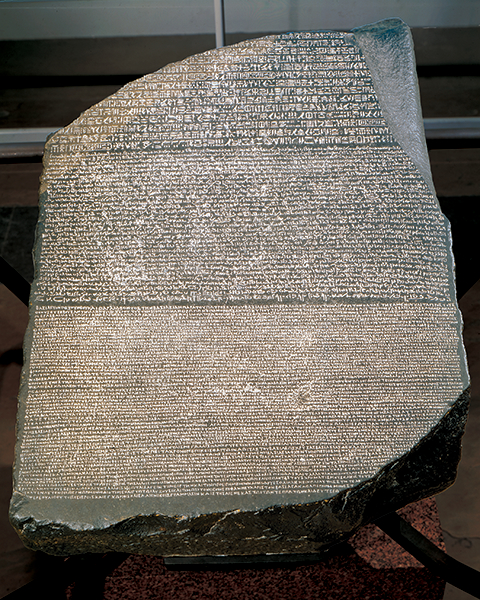Image Details

Bridgeman Art Library
DECODING HIEROGLYPHS. The Rosetta Stone bears an inscription in three scripts: hieroglyphs, Demotic and Greek. Prior to its discovery, the knowledge of how to read Egyptian hieroglyphs had been lost. Since the Greek inscription on the bottom third of the Rosetta Stone was intelligible, the stone played a significant part in the decipherment of hieroglyphs. Another less credited factor for the decryption was the Coptic language, the only form of Egyptian that was still understood.
The Rosetta Stone itself is the bottom part of a stele that was set up to affirm the royal cult of Ptolemy V in 196 B.C.E. It was discovered near el-Rashid (Rosetta), Egypt, in 1799 by Napoleon’s men. Following Napoleon’s defeat, the stone was taken to England and placed in the British Museum.
